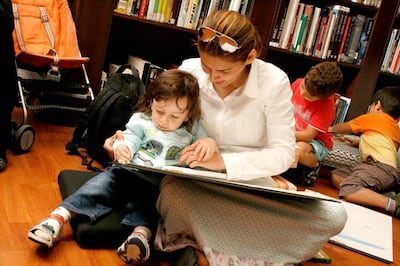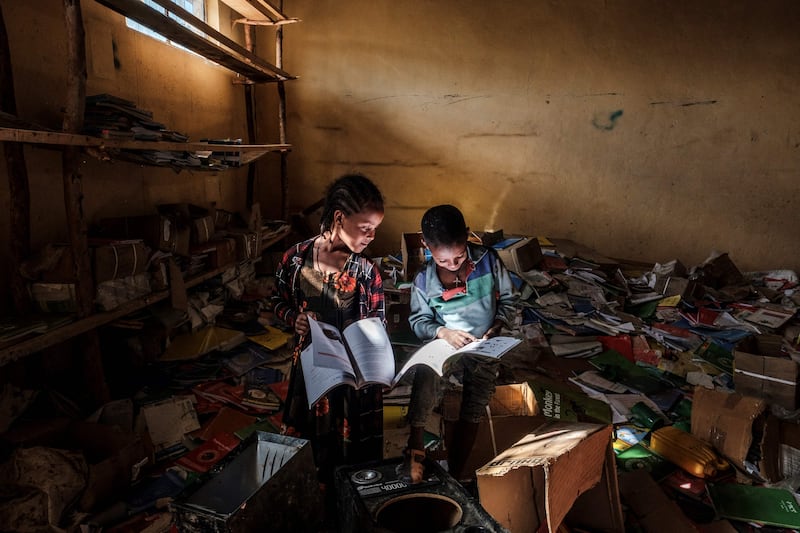When I became a mother in 2016, one of my goals was to ensure my child was read to enough. It wasn't a thing for my parents when I was growing up in the ’90s in India. School textbooks were considered adequate. Occasional poetry and stories found their way in, if curriculum permitted. My parents, growing up in the villages of North India post-Independence, didn’t have access to those either. Although stories and poetry in native languages and dialects were passed on plenty, it was mostly an oral tradition.
Today, in many urban worlds, reading to children right from the time of pregnancy up until they can perhaps read on their own, is quite a thing. Words, stories, fairy tales, religious text, moralistic conclusive messages (at times potent, at other times ridiculous) make their way to tender minds rather early in life. I often wonder how many of these words do they actually need for wholesome development, but then I quietly go on and read to my child.
Research suggests that reading aloud to young children, particularly in an engaging manner, promotes emergent literacy and language development and supports the relationship between a young child and parent. Bonding perhaps, was the primary reason for introducing book reading as an activity between parent and child.

While language development and lesson imparting is an essential aspect of early child development, as a mother of a child with an over-developed vocabulary and a mind too full of words and lessons, I wonder if it is not better to take it slowly.
I understand, of course, the need to keep alive the culture of book reading in such digitally addictive times. But is there a better way of doing this, one that involves more of the heart than the head – just sitting with our children and narrating a lullaby or folklore in one’s own language?
Shivali Muthanna, a parent and founding member of a Bengaluru-based Waldorf Homeschool initiative, believes in "no-noise" or passing on "less noise" to children. She draws inspiration from Rudolf Steiner’s philosophy of holistic education that stresses the importance of nurturing the imagination and the emotional development of children.

“If you are going to tell them about dinosaurs at 3, it makes no sense at all. For a child of age 3 or 4, simple imagery like cat went up the tree and cat came down the tree is a story. And you have to stop at that. Repetition is key. And when you are reading the same material for weeks, your need for more books reduces.”
While looking for a certain quality of stillness and silence from words, I came across a small but growing online community of mothers who sew “quiet books”, all by hand, as sensory toys and an educational activity that enhances fine motor skills.
Filled with felt-made pictures, the cloth books offer the gift of touch, silence, bright imagery and imagination to their audience, without words. Entrepreneurs across the globe – mostly mothers in India, Sri Lanka, Pakistan, Canada, the US and Australia are doing this – creating "quiet books" for 6-month-olds up to 6-year-olds, and allowing children to engage at a deeper level.
Rosy Arora, a mother and entrepreneur from Gurgaon, India was one among the few hands who brought the trend home in 2015. Her small-scale business, House of Toys, was conceived to supply mindful toys to her own child and to others too.
During an interaction, Nitin, Rosy’s husband confesses that the toy buying culture in India can be rather impulsive. The collective idea for devising these felt books was to offer quiet time to the child without constant parent intervention, to evoke imagination and story-telling on the basis of visuals. Eventually, it encourages focus, persistence and develops a longer attention span.
Rosy is candid about how she began the journey. “When my son was little, we were sure of not getting plastic toys at home. I learnt about quiet books from Etsy and decided to sew little toys and activity books at home. I borrowed a sewing machine from my father who ran a cloth business. And at night, when our son slept, I stitched toys and quiet books for him.”
They share that it was heartening to watch their son grow up in a way that helped his imagination; at times, he even came up with his own stories merely by looking at the visuals in the book.
Tragically, a few years ago, Rosy and Nitin lost their son. Despite their sorrow, and now as parents to a little baby girl, they continue to make toys by hand for children across the country.
Thilini Hapugoda from Sri Lanka, mother to two girls, began sewing quiet books four years ago to encourage mindful activities for her first born. She has created over 200 of these for parents across Sri Lanka. She feels quiet books are necessary to refine children's senses and for them to get quiet time on their own.
As a reader, writer and mother, many stories and books have come my way. Even though some have remained, most have disappeared in the fog of my memory. For my son, a few weeks ago, I came up with an oral story of tribes that live deep in a forest, devoid of printed words, yet filled with stories in the form of folklore. Since the story is basically gibberish, I tell it and sing it to him differently each time.
At times like these, words then become nothing but soothing sounds, and we are free to attach to the story the meaning we want. Perhaps, these are the sort of small, precious, moments that could expand my child's imagination so that one day, on his own, he becomes a reader.






